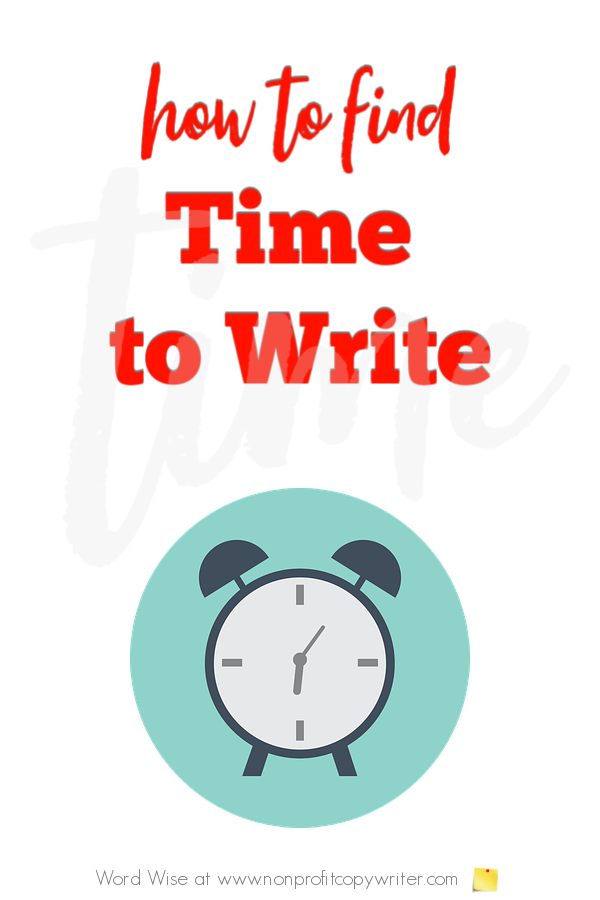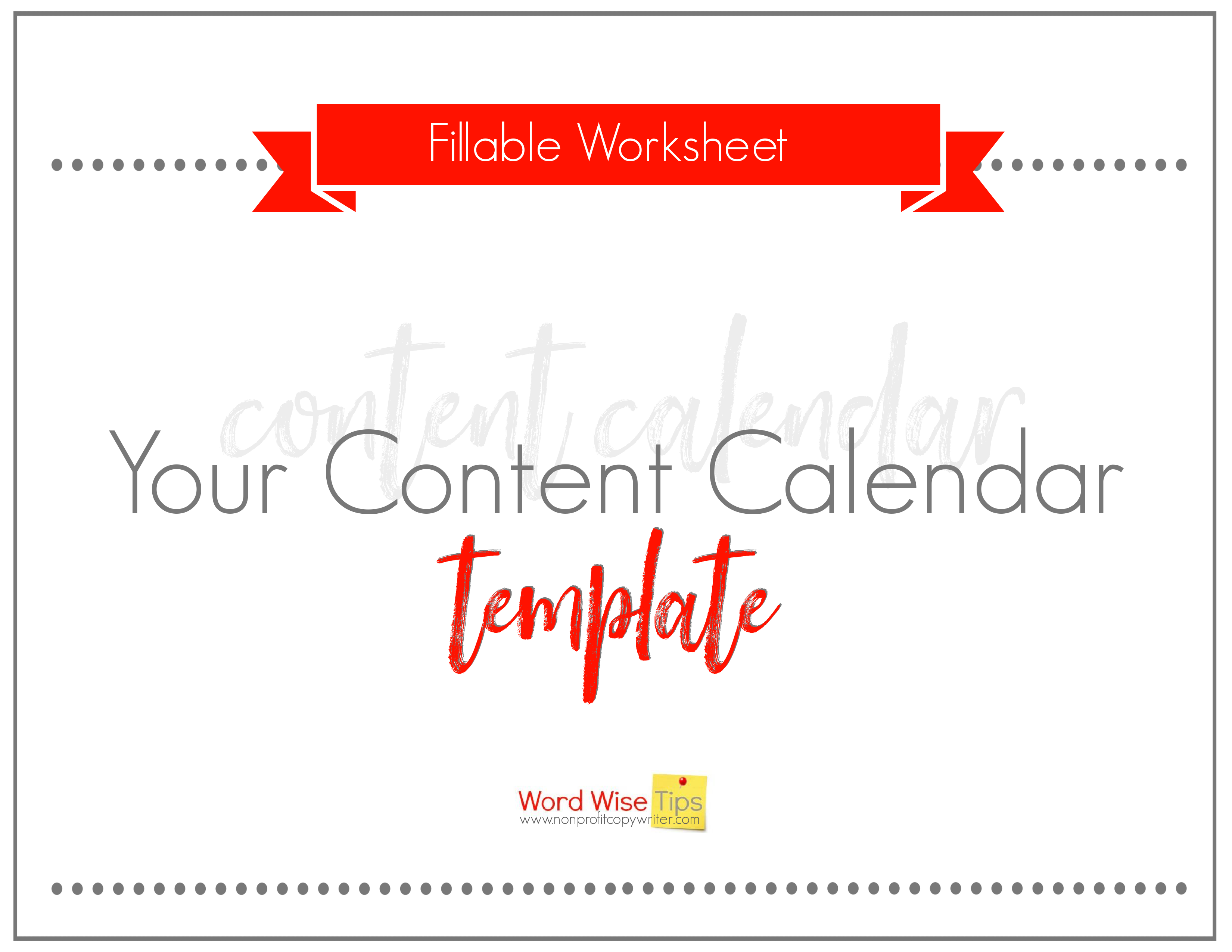Save Time: Get 5 Simple Writing Tips
you can put to use in 10 minutes
How To Find Time To Write: 3 Strategies to Use 30 Minutes At A Time
Award-winning writer Kathy Widenhouse has helped hundreds of nonprofits and writers produce successful content , with 750K+ views for her writing tutorials. She is the author of 9 books. See more of Kathy’s content here.
Updated 12.9.25
“How do I find time to write?” It’s a question I hear all the time from writers and those who want to be one.
I admit it … finding time to write has been one my key struggles in the writing business. Freelancing and writing to be published involve a whole lot more than actual writing. I have to set aside time to do interviews, talk with clients, answer email, post on social media, create graphic images for my content, keep financial records, organize my files, address interruptions and crises that pop up here and there. … and that doesn’t include the zillions of other non-writing everyday tasks that are just part of life.
It’s all good stuff. It needs to get done. And it fills up the hours and days too easily and cuts down on my writing time.
But over the years, I have learned an important truth: finding time to write has very little to do with finding time.
It has everything to do with knowing how to use the time to write that I already have.
I’ve Got a Bit of Time to Write, But I Get Confused
There’s a common problem when we writers sit down at the keyboard: we don't have a system or process. For me, this problem presents itself as confusion. I get confused about where to begin writing. I didn’t know where to start or what to do.
What was the idea I had yesterday – should I try to recover that thought now? Maybe I should flesh out a different idea or maybe I should do more research. Or perhaps I should try to think of another idea since the first one is going nowhere. What if I just write a page or two … is that a waste of time?
Things changed when I learned that writing is a set of three different activities.
Use this worksheet to create your own personalized content calendar and get more writing done.
Choose a Writing Task
Writer Jeff Goins helped me sort it out. He explains that writing boils down to three unique kinds of tasks. Jeff places each of these three writing tasks in one of “Three Buckets.”
He sets aside time to write each day and when sits down to do so, Jeff devotes his time to one of those tasks (buckets). The three buckets eliminate a whole lot of confusion.
Jeff’s three buckets are …
- Ideas
- Drafts
- Edits
I used his approach as a started point and adopted it to my own writing time. I give myself one of those tasks. When I sit down to write, I have a clear idea of which task I will attack with that bit of writing time, no matter how long or short that time is.
Task 1: Processing Ideas
I don’t use writing time to get ideas. Ideas pop up any time and often at inconvenient moments, like while I’m in the grocery store line.
Instead, I use my writing time not to get ideas but to flesh them out. Maybe I need to get facts and figures to back up a thesis. Maybe I need to interview an expert or user. Maybe I need to do a bit of basic background. As I research, I find that my idea synthesizes. I capture ideas all the time, but I process them when I sit down to write.
That’s why for me, this bucket is called “Processing Ideas.”
On a side note, if you struggle with capturing ideas, find a tool to help so that you don’t spend your writing time chasing down your thoughts. I like Evernote, a free app for note-taking and organizing ideas. (I use the free version but you can upgrade to premium and business versions if you need more functionality.) You can sync Evernote between your phone, laptop, desktop, and tablet. Some writers compose content in Evernote and then post them directly to their blog or website. There are plenty of other ways to capture and organize your ideas, outlined in this post.
Task 2: Drafting a Piece
Here’s where I take my ideas, source material, and notes and put them into an outline – one that’s appropriate for a particular project (an article or a chapter of a book, for example). Then I develop the outline one section at a time.
Of course, there are a few of you good folks out there who seem to be able to write through a piece without an outline or even a bare mental sketch of what you’re going to say. Yes, we’re all jealous.
For me, one of the keys to having a productive “Writing-A-Draft” session is to force myself to write without self-editing. My goal is to get the content out of my head and my notes into some semblance of a structure.
Many times, I’ll write a draft and discover that I need more information to fill in the blanks. So do just that – leave some blanks to fill in. I go back to my “Processing-Ideas-and-Research” mode during a different writing session. For this session, I stick with writing my draft.
Task 3: Editing Content
Once I have a draft, then I camp out in Editing mode .It’s rare that I am finished with a project in two, three, four, or even five revisions. I rework it until the content expresses my idea clearly and is easy to read.
I include publishing in this bucket. That may mean posting the content on my website or it may mean sending a completed draft to a client.
Two More Tips for Finding Time to Write
These days when I sit down to write, I’m not nearly as confused as I used to be. I have a pretty good idea of where I’ll be on the writing continuum process – either processing an idea, writing a draft, or editing content.
These two additional tips can help you manage your writing time.
- Tip 1: Build a writing habit by scheduling time each day to write. If you’re just starting out, you don’t need hours. In fact, thirty minutes, each day, adds up to 3.5 hours a week. (That’s the length of one sitcom show. You can do without that 30-minute interval in your day, can’t you?) The key is to make writing part of your daily life.
- Tip 2: Choose one of the three tasks, depending upon where you are with a writing project. Stick with that task for thirty minutes.
You’ll be less confused. You’ll know what to do with the time you have. And you’ll write a whole lot more content.
More Tips about The Writing Life
Maker Time vs. Manager Time For Freelance Writers ...
Don’t Finish Writing – and Get More Done ...
Make Time to Write With These 15 Simple Tips ...
The Shiny Object Syndrome for Writers ...
A Simple Content Calendar Template for Bloggers and Solopreneurs ...
My Favorite Writing Productivity Hack: It’s Not about Writing At All ...
Beat Writer’s Block When You Eat the Frog First ...
Do Writers Get Imposter Syndrome? Here’s What You Can Do About It ...
Find Time to Write by Busting These 3 Myths ...
The Writing Life: You Can Make a Living With Your Words ...
Manage These 3 Big Distractions When You’re Writing At Home ...
How to Create a Content Calendar ...
5 Fun Gifts for Writers: Useful Gadgets for Capturing Ideas on the Go ...
21 Ways To Beat Writer’s Block and Jumpstart Your Project ...
The Writing Process: The Key to Writing Faster and Better ...
How To Write Faster: Use Bursts AND Binges ...
Pre-Writing: 4 Easy Steps to Make Your Writing Go Faster ...
Secret of Success: Know How to Set and Achieve a Writing Goal ...
3 Tips for Starting Your Writing Project ...
Capturing ideas for writing projects: a system is the solution ...
How to find the main idea of your piece before you write ...
How to write an outline for your article or blog post ...
6 outline formats: different ways to organize your content ...
Tips about the Writing Process on our Pinterest board ...
Return from How to Find Time to Write to Nonprofit Copywriter home
As an Amazon Associate I earn from qualifying purchases.
Share This Page

Named to 2022 Writer's Digest list
BEST GENRE/NICHE WRITING WEBSITE


Stop Wasting Time!
Grab your exclusive FREE guide, "5 Simple Writing Tips You Can Put to Use in 10 Minutes or Less"













